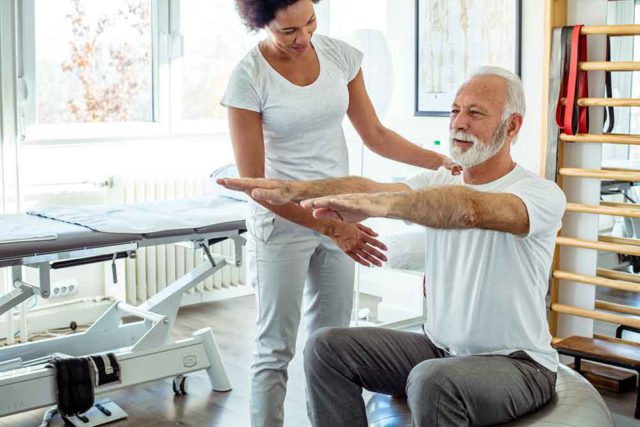
One of the most important things you can do is to keep moving and continue with your normal activities as much as possible.
It used to be thought that bed rest would help you recover from a bad back, but it’s now known that people who remain active are likely to recover more quickly.
This may be difficult at first, but don’t be discouraged – your pain will start to improve eventually. Consider taking painkillers if the pain is stopping you from carrying on as normal.
There’s no need to wait until you’re completely pain-free before returning to work. Going back to work will help you return to a normal pattern of activity and may distract you from the pain.
Simple back exercises and stretches can often help reduce back pain. These can be carried out at home as often as you need to.
For information about the types of exercises and stretches that can help, see:
Your GP may be able to provide information about back exercises if you’re unsure what to try, or you may want to consider seeing a physiotherapist for advice. Read about how to find a physiotherapist.
Doing regular exercise alongside these stretches can also help keep your back strong and healthy. Activities such as walking, swimming, yoga and pilates are popular choices.
Non-steroidal anti-inflammatory drug (NSAID) tablets, such as ibuprofen, can help relieve back pain. Many types are available to buy from pharmacies or supermarkets without a prescription.
But NSAIDs aren’t suitable for everyone, so check the box or leaflet to see whether you can take the medicine first. Speak to a pharmacist if you’re not sure.
If you can’t take NSAIDs, alternative medicines such as codeine may help. This is a stronger painkiller that should ideally only be used for a few days, as it can cause addiction if used for longer.
Paracetamol on its own isn’t recommended for back pain, but it may be used alongside stronger painkillers such as codeine.
Muscle relaxants may be prescribed by your GP if you have painful muscle spasms in your back.
Some people find that heat – for example, a hot bath or a hot water bottle placed on the affected area – helps ease the pain when back pain first starts.
Cold, such as an ice pack or a bag of frozen vegetables, placed on the painful area can also help in the short-term. However, don’t put the ice directly on your skin, as it might cause a cold burn. Wrap an ice pack or bag of frozen vegetables in a cloth first.
Another option is to alternate between hot and cold using ice packs and a hot water bottle. Hot and cold compression packs can be bought at most pharmacies.
Relax and stay positive
Trying to relax is a crucial part of easing the pain as muscle tension caused by worrying about your condition may make things worse.
Read more about:
Although it can be difficult, it helps if you stay optimistic and recognise that your pain should get better, as people who manage to stay positive despite their pain tend to recover quicker.
You can self-refer into community physiotherapy services. Simply call 0207 871 0545 to make an appointment. Your initial contact with one of our chartered physiotherapists may be over the phone, where you will either be given advice on appropriate treatment, or a face-to-face consultation will be arranged.
Should you wish to speak to your GP first, simply make an appointment with your local practice. If your GP refers you, one of our patient care advisers will contact you within 48 hours to arrange an appointment.